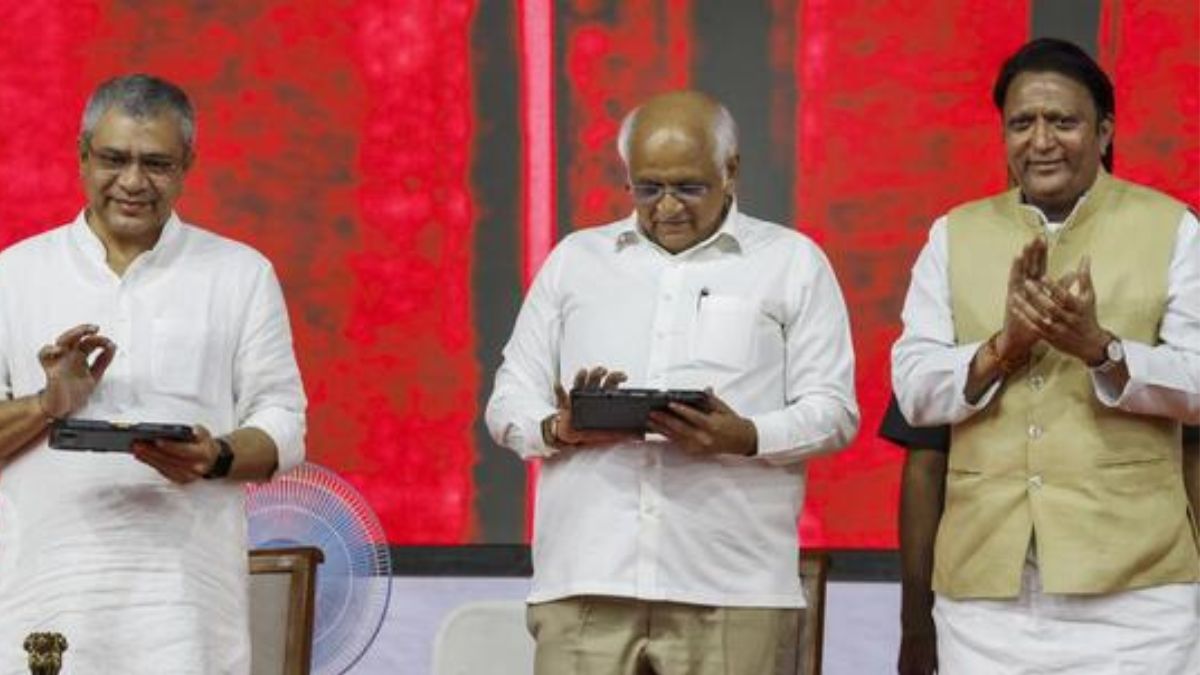
Information Technology (IT) Minister Ashwini Vaishnaw announced at the opening of Gujarat’s CG Semi Pvt Ltd’s pilot OSAT (Outsourced Semiconductor Assembly and Test) facility on Thursday that the company will produce India’s first “made-in-India” semiconductor chip in Sanand.
India’s first chip, which will be packaged, assembled, and tested in India rather than at a domestic fabrication plant, will be available by the end of 2025, Prime Minister Narendra Modi had previously stated from the Independence Day dais. Vaishnaw has earlier stated that three semiconductor facilities were vying for the milestone in a fierce battle.
According to HT, one of the three semiconductor facilities being built in Sanand would produce the first chip created in India. According to the government, CG Semi, which owns 92.3% of the company, created the Sanand OSAT facility, which is the nation’s first end-to-end unit. Renesas Electronics and Stars Microelectronics, who own roughly 6.8% and 0.9% of the project, respectively, are partners.
Supported by the India Semiconductor Mission (ISM) of the central government, the Sanand OSAT facility was approved in February 2024 with a five-year budget of ₹7,600 crore. The following month, the foundation stone was laid. The pilot line, G1, and the bigger commercial plant, G2, will be housed in the project. With a ₹600 crore investment and 100–200 employees, the pilot unit started production on Thursday.
With a ₹7,000 crore investment, the main plant is anticipated to hire about 1,000 workers once it is up and running, according to a person with knowledge of the situation. Only the pilot OSAT facility was inaugurated on Thursday.
It is anticipated that the larger plant, which is three kilometers from the pilot line and roughly 20 times larger, will be opened next year. Its built-up area is over 10 lakh square feet. The pilot line is vital for customer validation, said the IT minister, adding that products created in the pilot line would be tested and validated by customers before large-scale commercial manufacturing begins at the main factory.
The daily capacity of the pilot line will be 0.5 million chips. Within the following five years, G1 and G2 are anticipated to attain an installed capacity of 15 million chips per day, or 4.7 billion units yearly. The chips will be used in important industries like electric vehicles, cars, and consumer electronics.
The similar tiered strategy would be used for the Sanand-based Micron and Kaynes semiconductor plants, beginning with a trial line before transitioning to full-scale commercial operations, the IT minister noted. It is anticipated that the Micron factory will be completed by either January 2026 or December 2025.
There are four units in Gujarat, two in Odisha, and one each in Punjab, Assam, Andhra Pradesh, and Uttar Pradesh out of the ten units authorized under the ISM. At the Prarambh inauguration, which means “the beginning of something,” Vaishnaw declared, “It is India’s dream—that we design, manufacture semiconductors, and then they be used in the downstream industries.”
“Under Prime Minister Modi’s leadership, India is moving towards self-reliance in critical technologies,” stated Gujarat Chief Minister Bhupendrabhai Patel, who attended the opening. We witnessed this during Operation Sindoor, when our Army showed the world that India is on par with top nations by deploying defense technologies that were created domestically.
“Many have questioned India’s ability to become self-reliant in semiconductors,” said Vellayagn Subbiah, vice-chairman of CG Power. However, each chip we make here is a step closer to achieving sovereignty. First and foremost, our sector needs to follow China’s lead and employ chips manufactured in India. Second, we need to bring back engineers and develop Indian talent. After all, Indians make up 20% of the global semiconductor engineering workforce. Third, since true leadership entails moving beyond assembly, we must make R&D investments if we want to become actual global leaders.
